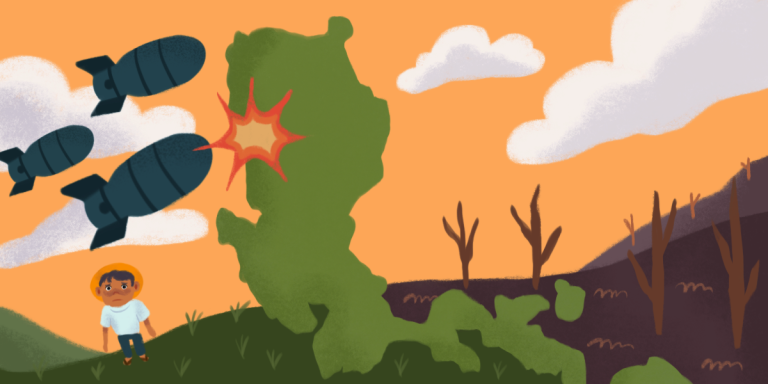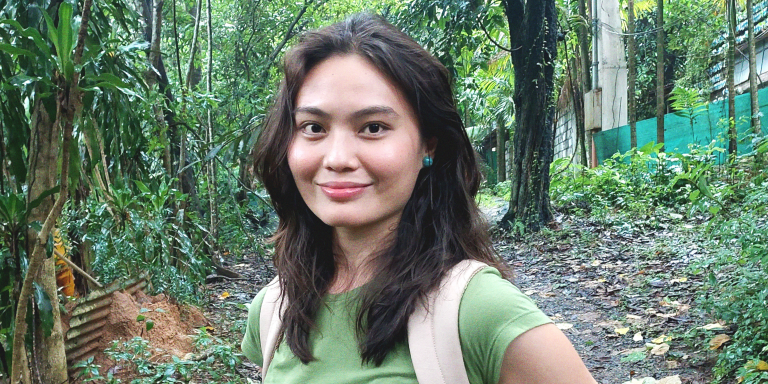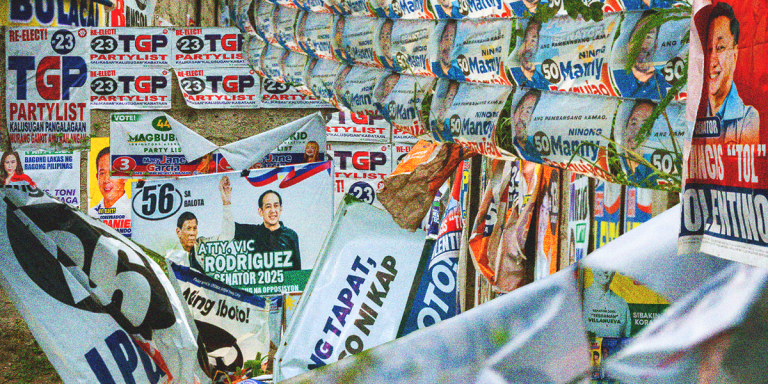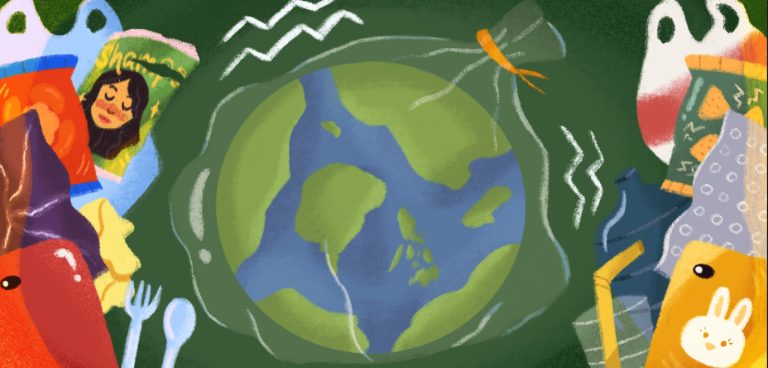Through innovative recycling, DLSU researchers transform paper cups into lab material
Dr. Jose Isagani Janairo and Brandon Lira developed an innovative method for making pipette tips out of disposable paper cups, with the process being reminiscent of the Japanese art form of origami.
As public concern about plastic waste grows, so too have efforts by researchers to minimize the presence of single-use plastics such as petri dishes, test tubes, and syringe tips in their labs. Given the ubiquity of these single-use plastics, it’s unsurprising that they can result in hundreds of kilograms of plastic waste annually. To address this issue, researchers Dr. Jose Isagani Janairo and Brandon Lira, from De La Salle University (DLSU) developed an innovative method for making pipette tips out of disposable paper cups. Pipette tips, which are usually made of plastics like polypropylene, are used to accurately measure small volumes of liquids like water using a pipette.
“I have been teaching laboratory courses for more than a decade, and the amount of plastic waste after class really bothers me,” shared Janairo, a biochemistry professor at DLSU. “I also love coffee, and it bothers me as well that something we use for less than an hour will be in the environment longer than our lifetime,” he added.
Here, he refers to the fact that, despite their name, paper cups aren’t made of just paper. They’re made of paper plastic laminate (PPL)—paper coated with a thin layer of plastic. Despite being made of less than 5% plastic by weight, nearly all paper cups cannot be recycled because the paper and plastic cannot be easily separated. This is exactly the problem that he and Lira, a master’s student at the time, wanted to address through their PPL pipette tips.
Two years ago, Janairo and Lira published and presented their work at the DLSU Research Congress. In their paper, they demonstrated that their PPL pipette tips were as accurate as standard pipette tips at measuring out one milliliter of water. These recycled pipette tips also remained accurate even after 10 uses, demonstrating their reliability. Earlier this year, DLSU, Janairo, and Lira were awarded a patent by the Intellectual Property Office of the Philippines (IPOPHL) for their invention. This garnered them widespread coverage and acclaim for their efforts, which represent a significant step toward more sustainable lab practices.
Stirring up sustainability, one cup at a time
From an outside perspective, Janairo and Lira’s work is reminiscent of the Japanese art form of origami. Their process involves sanitizing used paper cups with a hypochlorite solution, cutting out templates, rolling the templates into form, and gluing them into the final shape. Upon drawing the comparison, Lira agreed, “Our goal was to design a simple, accessible template for pipette tips that anyone could create by using the template and following straightforward folding (or rolling) instructions, much like Origami.” Indeed, the simplicity of their design is one of its strengths, as no specialized equipment or materials are needed.
Janairo also drew inspiration from frequent trips to the airport. “Before, the water dispensers at the airport here in Manila were accompanied with flat sheets of paper that you can fold to make into a cup. This sparked the idea to transform PPL cups into pipette tips,” he said. It was this moment of serendipity that provided the impetus for the idea that was brewing in the back of his mind to be materialized. Similarly, Lira likened their work to paper straws, “If straws can be made from paper, we thought, why not pipette tips?”
It’s no surprise that the two thought of pipette tips as the focus of their sustainability efforts, given their backgrounds. Janairo uses them regularly in his research, which has recently investigated sustainable chemistry, bionanotechnology, and the biochemical applications of machine learning. Lira, who holds a master’s degree from DLSU, has likewise used them in his career in the academe and industry. Now a charted chemist, he works as an R&D chemist at DuROCK Alfacing International in Canada and delivers tutorials and lectures on chemistry part-time.
All this inventive thinking and hard work has paid off now that their patent has been recognized. Lira was ecstatic about receiving the patent, “[It] feels truly rewarding and serves as validation of our simple yet meaningful innovation…[This experience] has strengthened my dedication to pursuing further innovations in my field.”
“The project was very simple but I am happy that it was still considered inventive, novel, and has the element of being a technical solution to a problem,” Jainaro remarked about his second patent. His first patent, which was awarded two years ago, was for a hand tool that could detect tampered rubber.
Furthermore, both researchers expressed their gratitude for the assistance they received from the DLSU Innovation and Technology Office (DITO) and the DLSU Intellectual Property Office in securing their patent. “These offices handle all aspects of patent-related work and were instrumental throughout the process, from conducting prior art searches to filing the application. Without their expertise and assistance, the process would have been far more challenging,” Lira credited. In particular, Peter Tenido, the project director of DITO, and his team were critical in driving the patent application process forward through the years.
The road toward sustainability
While Janairo and Lira’s work on the PPL pipette tips is certainly significant, it is also important to view it through the broader lens of sustainability practices. Moreover, though their method for transforming paper cups into pipette tips is simple and cost-effective, its impact would be limited without widespread adoption.
“Scalability is an issue that hinders its adoption. Manually cutting and folding PPLs is a slow and inefficient process to produce these,” Janairo noted. He also invited anyone interested in helping them address their invention’s scalability issues, admitting that at this stage, their invention is more of a proof-of-concept than a fully realized idea. Lira added that “developing a working prototype is just the first step. The next challenge will be manufacturing and implementing it on a larger scale.”
Another foreseeable barrier to adoption is the inapplicability of these PPL pipette tips for research-grade lab work, which demands a certain level of purity. Indeed, while the original paper cups are cleaned and sanitized before being turned into PPL pipette tips, they could still be contaminated with residues from the drink and human handling. These residues could interfere with the results of highly sensitive laboratory techniques in fields such as genomics and molecular biology.
“Pipette tips used in sensitive laboratory activities typically need to be sterilized and are often autoclaved. Given the nature of our material, we don’t believe that these tips would withstand such processes, making them less suitable for these kinds of lab work,” Lira explained. Autoclaves are machines that are used to sterilize lab equipment with high-temperature steam, getting rid of bacteria and fungi to reduce the risk of contamination during experiments. At these temperatures, the thin plastic layer on the PPL pipette tips is likely to melt and allow the underlying paper to be soaked.
Given the limitations of PPLs as a material, Janairo and Lira are also eager to work with other sustainable alternatives such as plastic bottles, biodegradable plastics, and biopolymers. They are likewise interested in transforming PPLs and other sustainable materials into other laboratory equipment like racks and containers to hold tiny lab tubes, as well as other disposables.
“By thinking creatively, we could significantly contribute to more sustainable practices in laboratory settings,” Lira prompted. He further remarked that “it’s really exciting to think about the possibilities we could discover.”








